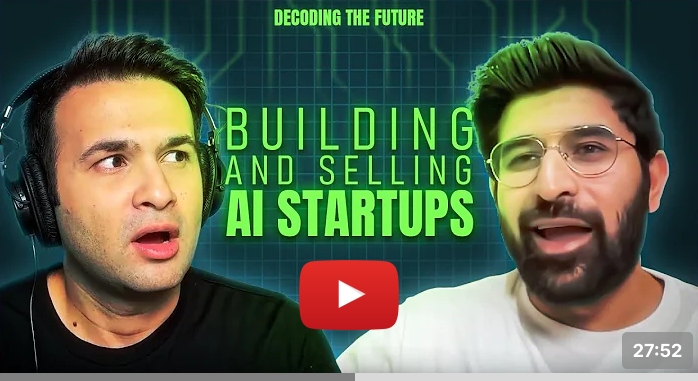The Playbook: How to Build and Sell AI Startups

Artificial intelligence (AI) is reshaping industries and creating new opportunities. For aspiring entrepreneurs, it presents an exciting, yet challenging frontier.
In this article, we delve into the experiences and insights of Hassan Bhatti, a successful AI startup founder, sharing key strategies for building and selling AI companies.
Identifying Startup Opportunities
Identifying the right opportunity is crucial for success. Hassan emphasizes looking for accelerating technology trends like AI and data privacy. These trends often signal areas ripe for innovation.
Building a team with diverse skills is essential. Hassan suggests combining hustler, builder, and researcher personalities to cover all aspects of the startup journey. Additionally, securing strong investors and early design customers can provide valuable support and validation.
Building and Validating Products
For deep tech projects, significant backend work may be necessary before showcasing a minimum viable product (MVP). This often involves extensive development and testing to ensure the product’s feasibility.
Meanwhile, for workflow products, a visual UI dashboard can be quickly created for customer feedback. Early feedback is critical for refining the product. Validate product-market fit by assessing customers’ willingness to pay and allocate budget. This indicates the product’s potential value in the market.
The Importance of Timing
Timing is crucial in the startup world.
Entering a market too early can lead to challenges in customer adoption. It’s essential to balance being early enough to capitalize on trends and late enough for market readiness.
Ideal timing occurs when companies have already allocated budgets for solving the specific problem your product addresses. This increases the chances of customer adoption and success.
go-to-market strategies for B2B AI Startups
Knowing where potential customers spend their time is key. Hassan recommends focusing on places like conferences, LinkedIn, and industry newsletters. These platforms can provide valuable access to target audiences.
Start with a large pool of potential design customers and narrow it down through interactions. Focus on building strong distribution and go-to-market muscles to effectively reach and engage customers.
Selling AI Startups
Understanding your company’s position in terms of intellectual property (IP), market readiness, and revenue is critical. This helps in determining the appropriate time and approach for selling the startup.
Researching potential acquirers’ product roadmaps and identifying alignment can significantly increase the likelihood of a successful exit. Build relationships with product teams at potential acquiring companies to enhance these opportunities.
Key Changes and Future Predictions
Recent advancements have made it easier and more cost-effective to build AI applications. The focus has shifted from infrastructure to UI/UX, go-to-market strategies, and workflow innovation.
Smaller teams can now build significant companies with less funding. AI will be embedded in every industry, leading to increased automation of repetitive tasks. This creates opportunities for AI-native individuals entering the workforce.
Frameworks for Building Successful AI Companies
Hassan outlines five key frameworks for success. These include identifying trends, building robust teams, securing early support, focusing on market readiness, and developing strong go-to-market strategies.
Predictions for the Future of AI
According to Hassan, the future of AI is promising. Expect powerful multi-agent systems and AI assistants to rise. He believes these developments will revolutionize industries and create vast opportunities.
Hassan Bhatti’s insights provide a comprehensive roadmap for aspiring AI entrepreneurs. His strategies highlight the importance of timing, strong teams, and effective go-to-market approaches.
By following these guidelines, entrepreneurs can navigate the complexities of the AI landscape and achieve success.






